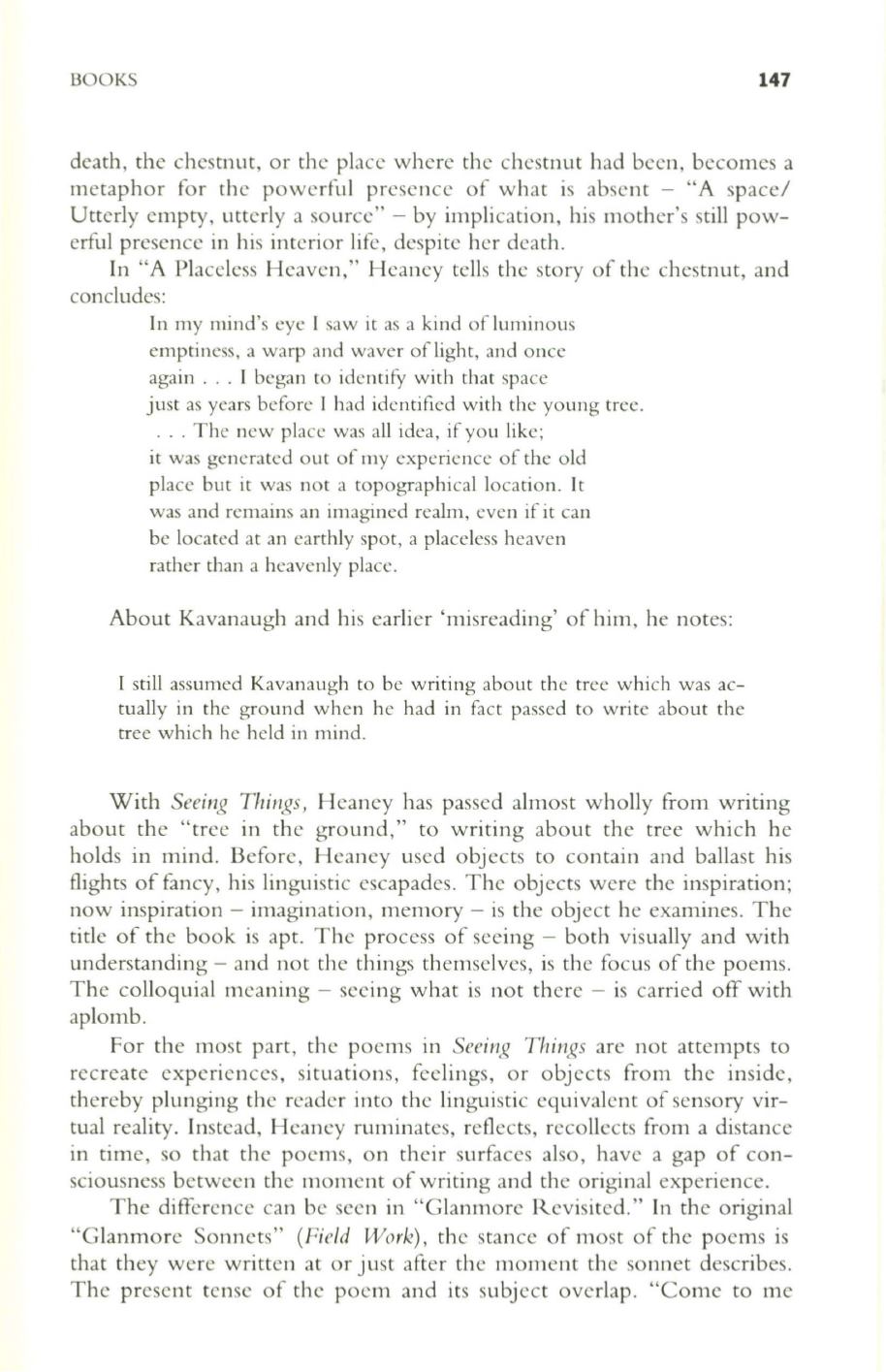
BOOKS
147
death, the chestnut, or the place where the chestnut had been, becomes a
metaphor for the powerful presence of what is absent - "A space/
Utterly empty, utterly a source" - by implication, his mother's still pow–
erful presence in his interior life, despite her death.
In
"A Placeless Heaven," Heaney tells the story of the chestnut, and
concludes:
In
my mind's eye I saw it as a kind of luminous
emptiness, a warp and waver of light, and once
again ... I began to identify with that space
just as years before I had identified with the young tree.
. . . The new place was all idea, if you like;
it was generated out of my experience of the old
place but it was not a topographical location. It
was and remains an imagined realm , even if it can
be located at an earthly spot, a placeless heaven
rather than a heavenly place.
About Kavanaugh and his earlier 'misreading' of him, he notes:
I still assumed Kavanaugh to be writing aboLlt the tree which was ac–
tually in the ground when he had in fact passed
to
write about the
tree which he held in mind.
With
Seeil1g Things,
Heaney has passed almost wholly from writing
about the "tree in the ground," to writing about the tree which he
holds in mind. Before, Heaney used objects to contain and ballast his
flights of fancy, his linguistic escapades. The objects were the inspiration;
now inspiration - imagination, memory - is the object he examines. The
title of the book is apt. The process of seeing - both visually and with
understanding - and not the things themselves, is the focus of the poems.
The colloqui al meaning - seeing what is not there - is carried off with
aplomb.
For the most part, the poems in
Seeing Things
are not attempts to
recreate experiences, situations, feelings, or objects from the inside,
thereby plunging the reader into the linguistic equivalent of sensory vir–
tual reality. Instead, Heaney ruminates, reflects, recollects from a distance
in time, so that the poems, on their surfaces also, have a gap of con–
sciousness between the moment of writing and the original experience.
The difference can be seen in "Glanmore Revisited."
In
the original
"Glanmore Sonnets"
(Field Work),
the stance of most of the poems is
that they were written at or just after the moment the sonnet describes.
The present tense of the poem and its subject overlap. "Come to me


